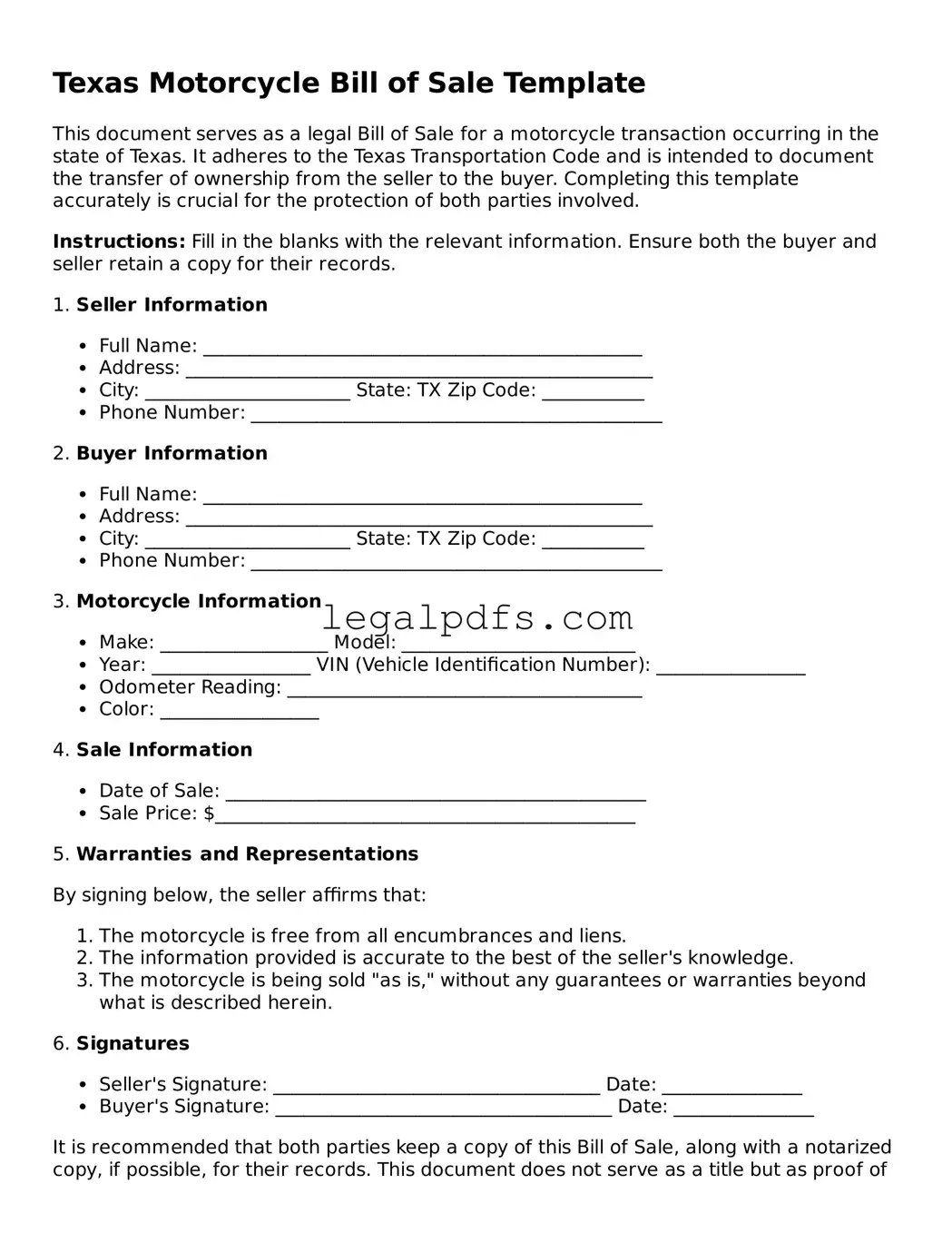What is a Texas Motorcycle Bill of Sale form?
A Texas Motorcycle Bill of Sale form is a legal document that records the transfer of ownership of a motorcycle from a seller to a buyer in the state of Texas. It provides proof of purchase and details the transaction, including information about the buyer, seller, and motorcycle.
Why do I need a Motorcycle Bill of Sale form in Texas?
It is important because it serves as evidence of the transaction, helping to protect both parties in case of disputes. It's also used to register and title the motorcycle in the new owner's name with the Texas Department of Motor Vehicles (DMV).
What information is included in a Motorcycle Bill of Sale?
Typically, the form includes the names and addresses of the seller and buyer, the motorcycle's make, model, year, VIN (Vehicle Identification Number), mileage, the sale price, and the date of the transaction. The form may also include terms of the sale and signatures of both parties.
Is notarization required for a Motorcycle Bill of Sale in Texas?
Notarization is not mandatory for a Motorcycle Bill of Sale in Texas, but it is recommended. Having the document notarized can add a layer of legal protection and authenticity to the transaction.
Can I create my own Motorcycle Bill of Sale form?
Yes, you can create your own Motorcycle Bill of Sale form; however, it must include all required information to ensure its validity. Using a template or seeking legal advice can help ensure that the document meets all legal requirements in Texas.
How does a Motorcycle Bill of Sale protect the buyer?
It protects the buyer by serving as proof of ownership, purchase price, and the transaction date. This can be helpful in resolving any future disputes about the motorcycle’s condition or ownership, and it's necessary for registration and titling purposes.
How does a Motorcycle Bill of Sale protect the seller?
For the seller, it provides proof that the motorcycle was legally sold and transferred to the buyer, releasing them from liability for any future incidents or obligations related to the motorcycle after the sale date.
Do I need to register my Motorcycle Bill of Sale with any government agency in Texas?
While the Bill of Sale itself does not need to be registered, it is necessary for the buyer to use this document to register the motorcycle under their name with the Texas DMV. The process involves presenting the Bill of Sale alongside other required documents to complete the registration and titling of the motorcycle.
What happens if I lose my Motorcycle Bill of Sale?
If you lose your Motorcycle Bill of Sale, it's advisable to contact the other party involved in the transaction to obtain a copy. If that's not possible, drafting a new document that both parties can sign may be necessary. It's crucial to keep a copy of this document safe, as it serves as important legal evidence of the sale and ownership transfer.
